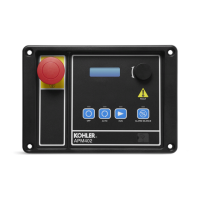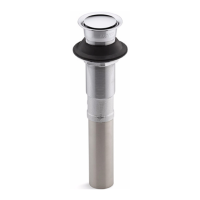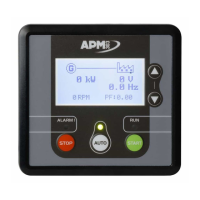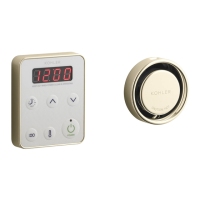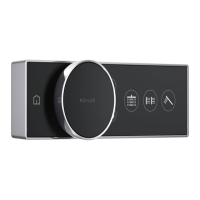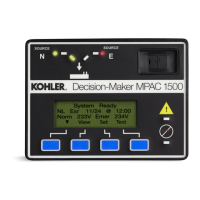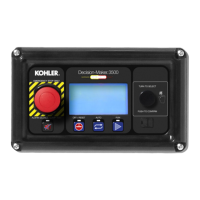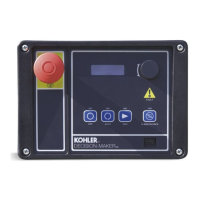4 — PROGRAMMABLE PARAMETERS
pg. 67
Return to TOC Curtis AC F2-A, F4-A, F6-A Motor Controllers – FOS 4.5 – April 2022
APPLICATION SETUP — BRAKE MENU
PARAMETER ALLOWABLE RANGE DEFAULT DESCRIPTION
Brake Input
Brake_Pot_Percent
0x33D3 0x00
0.0 – 100.0 %
0 – 1000
Read Only Normalized percentage of the brake input. Similarly to the Throttle
Input variable, the controller processes the voltage at the assigned
Analog Input as a percentage, and not as a voltage (due to dynamic
testing), to determine the amount of motor braking (regen).
Note, the controller does not offer a specic brake input pin(s)
or circuit(s), as a default (Brake_Source = 0). Without a physical
throttle, the analog input at pin 16 can be a physical brake
input. Figure 13 illustrates using the 2-wire option as a brake
signal input on the 35-pin controllers.
Mapped Brake
Mapped_Brake
0x3350 0x00
0.0 – 100.0 %
0 – 32767
Read Only Mapped brake request. See Figure 23.
Brake Command
Brake_Command
0x33D2 0x00
0.0 – 100.0 %
0 – 32767
Read Only Brake request to slew rate block.
Note that the percent value is only positive for the Brake
Command. See Figure 23.
Brake Pedal Enable
Brake_Pedal_Enable
0x33C9 0x00
On/Off
On/Off
Off When this parameter is set to On, the Brake Input (from a brake
pedal input) forms the basis of the Brake Command. If using a
VCL Brake, set this parameter to Off.
Brake Min Input
Brake_Deadband_Percent
0x33C2 0x00
0 – 100 %
0 – 1000
15 % Denes the minimum brake input’s threshold. Increasing this
parameter will increase the neutral range (deadband). This
parameter is especially useful with the pedal assemblies that
do not reliably return to a well-dened neutral point because
it allows the “deadband” to be dened wide enough to ensure
that the controller cancels regen (motor braking) when the pedal
mechanism is released.
Brake Max Input
Brake_Max_Percent
0x33C6 0x00
0 – 100 %
0 – 1000
85 % Denes the brake input percentage required to produce 100%
controller regen. Decreasing this parameter setting reduces the
analog input percentage (voltage at the input) and therefore
the full stroke necessary to produce full controller regen. This
parameter accommodates reduced-range throttle assemblies.
Brake Map Shape
Brake_Map
0x33C5 0x00
0 – 100 %
0 – 32767
50 % Modies the vehicle’s response to a brake input. Setting the brake
map at 50% provides a linear output response to pedal position
(brake input). Values below 50% increase the controller regen
at low brake settings, providing enhanced slow speed braking.
Values above 50% give the vehicle a slower, less responsive feel
at low brake inputs.
The map value is the percentage of controller regen at half
throttle [(Min Input + Max Input)/2].
Brake Offset
Brake_Offset
0x33C8 0x00
0 – 100 %
0 – 32767
0 % Denes the initial controller response generated when rst
moving the brake out of the neutral deadband. For most vehicles,
a setting of 0 is appropriate. For heavy vehicles, however,
decreasing the offset may improve controllability by reducing the
amount of brake-input required to start the vehicle regen braking.
Brake Filter
Brake_Filter_Frequency
0x33DA 0x00
0.1 – 10.0 Hz
10 – 1000
0.6 Hz Sets the low pass lter’s cutoff frequency for the assigned brake
(analog) input. Higher values will make the brake more responsive
to quick changes. Lower values will make the brake less
responsive and subject to electrical noise.
VCL Brake Enable
VCL_Brake_Enable
0x33D1 0x00
On/Off
On/Off
Off When programmed On, the brake processing with fault detection
at the assigned analog input will operate normally; however,
the brake command will require VCL to dene the connection
between the Brake_Pot_Percent and VCL_Brake variables. This
allows VCL exibility and customization of throttle processing
while still allowing brake fault detection.
Quick Link:
Fig. 23 p.69
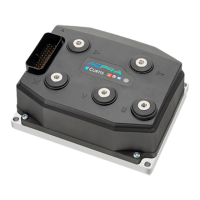
